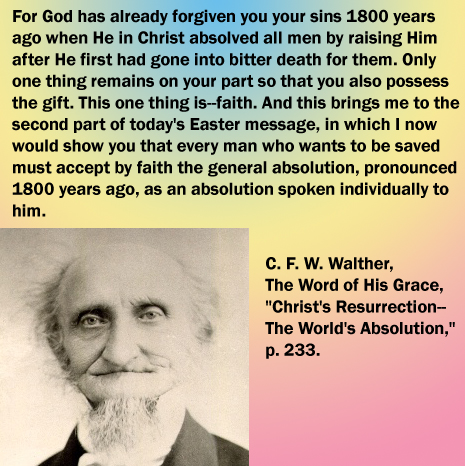The Justification of Christ as the Efficient Cause of our Justification
The Narrow Lutheran Middle in the Controversy on Universal Objective Justification
By Rev. Magnus N. Sørensen
Samuel Huber - the "former" Calvinist kicked out of Wittenberg
"This is the truth and the light of the Gospel, showing to us the work of redemption accomplished for all, so that we all can apply to ourselves by faith this benefit of redemption and the abolishment and remission of our sins. And so this is the foundation and the description, as of universal remission, so also of universal justification."
 |
| Paul Calvin Kelm helped Valleskey with this Church Growth textbook. O-Jay Webber cannot figure out how I connect CG and OJ. Otten promotes the book. |
The development of Universal and Objective justification after Huber.
"The Swedish expert in Lutheran Orthodoxy, professor at Lund University, Rune Söderlund has claimed that the doctrine or at least the term universal justification arose among the Moravians.
Söderlund points to Norwegian professor Leiv Aalens
doctor’s dissertation as evidence, that even the young Zinzendorf, founder of Moravianism, taught universal justification. Zinzendorf and the Moravians reacted against the legalism of pietism.
While pietism looked for signs of regeneration in the inner life of the believer, the Moravians looked to the cross for assurance.
The Swedish Moravian preacher, Rutström, made the teaching of universal justification popular in Sweden, especially through his songs. According to Söderlund, Rutström might have read Huber directly while also being spread by the German Moravians.
In the discussions about universal justification in Sweden at the time of Rutström, another preacher, Anders Nohrborg defended a middle-way, where Christ was the representative head of mankind, who is absolved from the sins of the world in the resurrection. This middle-way left room for an individual justification as a separate forensic act."
LCMS Walther
Rune Söderlund argues that the LCMS had connections to the Moravians in Germany and that the doctrine of universal justification entered the Missouri synod that way.
Tom Hardt in his essay from the Robert Preus Festschrift however pointed out that the Synodical Conference referred to the Swedish Nohrborg when they began using the term in the 1872-essay of the Synodical Conference.
...
At the 1860-convention, it was also confessed that this universal justification was a representative justification:
As surely as Christ has died, and died for all people, so surely God sees all people as dead for the sake of their sins. Christ's death has redeemed sins as death for all people.
On the other hand, Christ is also raised in the stead of all people, thus all people are declared righteous in Christ; for Christ needed to be as the Righteous One for His person not by resurrection, but this has been done for our sake, He died and rose again in their place, and thus all are justified in Christ.
Likewise, universal atonement was in no way confused with the justification that happened in the resurrection:
Finally, the following was spoken concerning the first thesis: What Christ has done and what has happened to Christ should not be confused. His life, death, and resurrection was no absolution, but rather His resurrection from the dead.



